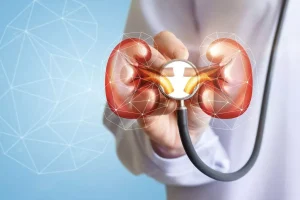
Was it something specific they were scared to deal with – unresolved trauma or family of origin issues? It’s important to get to the underlying cause of the relapse, rather than get stuck in the self-defeating mindset that relapse is a sign of weakness, or not trying hard or being good enough. I deal with this with the executives in our treatment program all the time.

What is Gratitude in Recovery?

Provisional data for the first half of 2021 (as of January 2022) were obtained from the Centers for Disease Control and Prevention Wide-ranging Online Data for Epidemiologic Research. The National Institutes of Health Office of Intramural Research deemed the project exempt from institutional review board oversight. This study highlights the role of social determinants in drug dependence and relapse. Despite differences in presentation, somewhat similar relapse mechanisms were seen in both groups. Having occasional cravings or thoughts of drinking is normal during recovery.
Alcohol Recovery Statistics
Deaths increased in the spring of 2020 as the pandemic unfolded, and the number of deaths remained elevated in the first half of 2021. Include the names of everyone on your medical and support teams and how to contact them. Global cancer cases are expected to rise around 77 per cent by the middle of the century, UN health authorities said on Thursday, highlighting the growing burden of the disease. Meanwhile, 38 per cent of drinkers were found to have four to five servings on one or more occasions in the preceding month, an amount considered to be heavy episodic drinking. The death rates were also highest in low-income countries and lowest in high-income countries. Notably, the vast majority of these deaths were among men, with the highest prevalence in the age group.
Alcohol Recovery Statistics & Facts
Mental health issues like depression, anxiety or bipolar disorder can make it more difficult to stay committed to sobriety, increasing the likelihood of alcohol relapse. In order to truly understand the meaning of relapse rates for alcohol — especially when considering how high they are — we have to look at relapse rates for other, similar diseases. Someone who’s relapsed returns to their former drinking patterns and re-exhibits alcohol relapse statistics former behaviors, e.g. lying and manipulating loved ones to hide their drinking. Overcome barriers, access personalized care, and find the path to sobriety. Discover the power of inpatient addiction treatment and find hope on the path to recovery. Understanding these different types of alcohol relapses can help individuals in recovery prepare for potential setbacks and stay motivated on their journey towards sobriety.


Anyone who’s dealt with alcohol addiction understands that the thoughts and cravings for alcohol never truly go away. However, how you deal with these thoughts and cravings determines whether you’ll return to alcohol consumption and abuse. This article highlights various key statistics related to alcohol relapse, including the percentage of alcoholics who relapse within the first year after treatment, the most common causes of relapse, and the different types of alcohol relapses. It also provides information on how age, gender, race, and country can influence an individual’s likelihood of experiencing a relapse. Another study found that individuals who experience a major life stressor, such as a divorce or job loss, are also at higher risk for relapse. In fact, researchers found that individuals who experienced a significant stressor were 2.5 times more likely to relapse compared to those who did not.
Patient Care Network
These studies clearly point to the PSL circuit as a critical early target of alcohol effects and its potential, deleterious impact on neuroplasticity with chronic alcohol abuse. The 2021 NSDUH national report includes selected estimates by race, ethnicity, and age group. It is the most comprehensive report on substance use and mental health indicators that SAMHSA has released to date. “To build a healthier, more equitable society, we must urgently commit to bold actions that reduce the negative health and social consequences of alcohol consumption and make treatment for substance use disorders accessible and affordable,” Dr. Ghebreyesus said.
Audio and Subscription
- Notably, the vast majority of these deaths were among men, with the highest prevalence in the age group.
- Unlike traditional rehabilitation or Alcoholics Anonymous (AA), Ria Health takes a practical and individual approach to treating AUD.
- These studies clearly point to the PSL circuit as a critical early target of alcohol effects and its potential, deleterious impact on neuroplasticity with chronic alcohol abuse.
- Overcome barriers, access personalized care, and find the path to sobriety.
- Discover the power of inpatient addiction treatment and find hope on the path to recovery.
The purpose of this study was to compare the sociodemographic factors and correlates relapse in alcohol dependence and opioid dependence. In treatment, patients learn to identify any high-risk situations and the warning signs of relapse, and create relapse prevention plans they can apply to dangerous situations, triggers and other life stressors. Patients are also taught the disease model of addiction, which states that addiction is both chronic and progressive. In other words, it’s a lifetime diagnosis, so patients have to carefully maintain their recovery using different coping skills, support networks and self-care routines. By using those important techniques, people in recovery will adeptly maneuver any threat of relapse.
No relapse is too big to recover from, and in fact, you can take immediate action to regain your sobriety. However, it’s important to assess the relapse and identify things you can change or adapt to prevent a similar experience in the future. A total of 4 individuals did not have 6 month follow up data available and were excluded from the analyses. You can use sobriety savings to pay off debts, save for retirement, or invest in a healthier lifestyle. For those with addiction to harder drugs such as cocaine, opiates, and methamphetamines, it can mean saving thousands of dollars a year.
SAMHSA Releases New Data on Recovery from Substance Use and Mental Health Problems Among Adults in the United States
- To that end, researchers are looking for clinical and biological markers that predict relapse after treatment and to use those risk factors to develop effective treatments to reduce relapse rates.
- A lot of folks back off their program at that point, figuring they’ve changed, and they have it under control, which puts them at much higher risk for relapse.
- Biopsychosocial characteristics at baseline were compared between those who maintained their abstinence (abstainers) and those who consumed alcohol within 6 months of participation (relapsers) with independent-samples t-tests and Fisher’s Exact Test, where indicated.
- It’s important to note that each individual’s journey in recovery is unique and there is no one-size-fits-all approach to preventing relapse.
- Here, we focus separately on groups of individuals who achieved 3-year remission with or without help and, among these remitted individuals, examine overall predictors of 16-year relapse and potential differential predictors in the two groups.
- Accordingly, our findings on lower remission and higher relapse rates among individuals who do not obtain help quickly may not generalize to individuals who have alcohol-related problems but have not sought help.
- If you can recognize the warning signs of each stage, you can take action to avoid a relapse.
We have not identified previous studies of demographic predictors of remission among untreated individuals. However, compared to untreated individuals with active alcohol use disorders, untreated remitted individuals are older and more likely to be women, https://ecosoberhouse.com/article/how-to-taper-off-alcohol/ married and employed and have a later onset of alcohol problems [15-17]. Compared to individuals who remitted with help, those who remitted without help tend to be more socially stable and to have had fewer life-time drinking problems [18,19].









.png)
